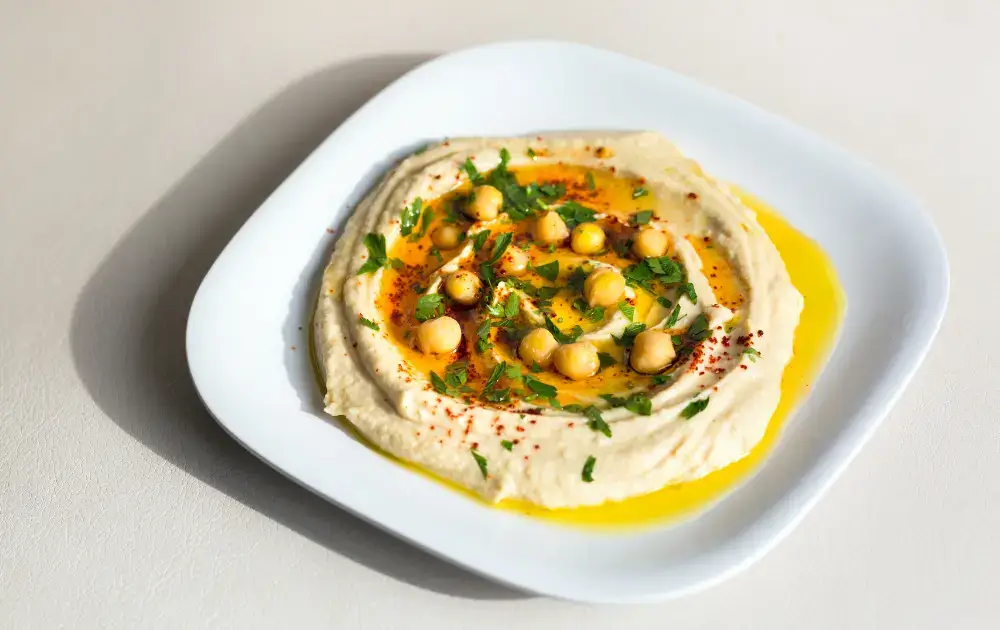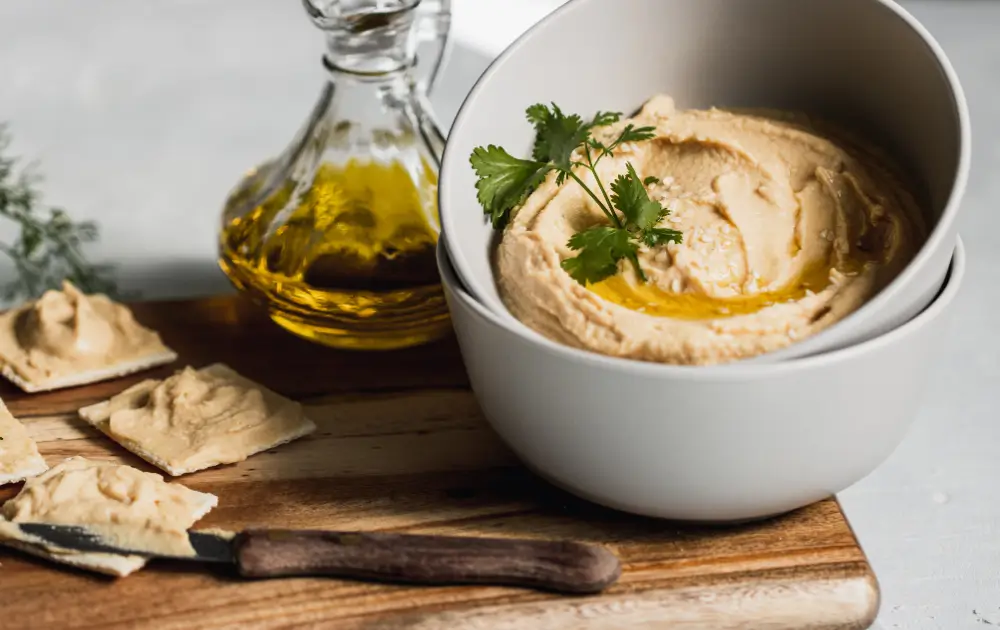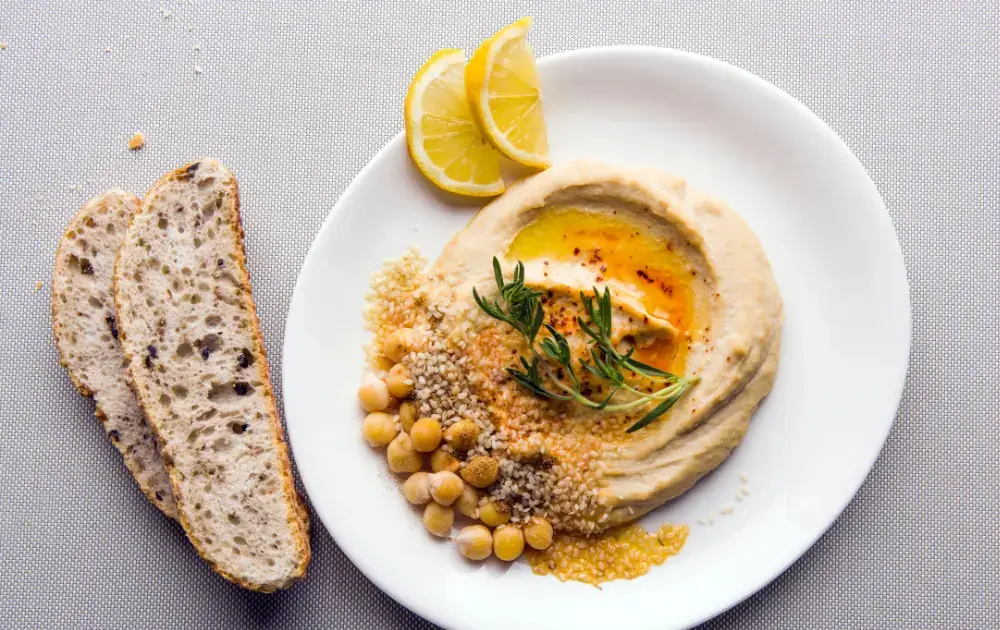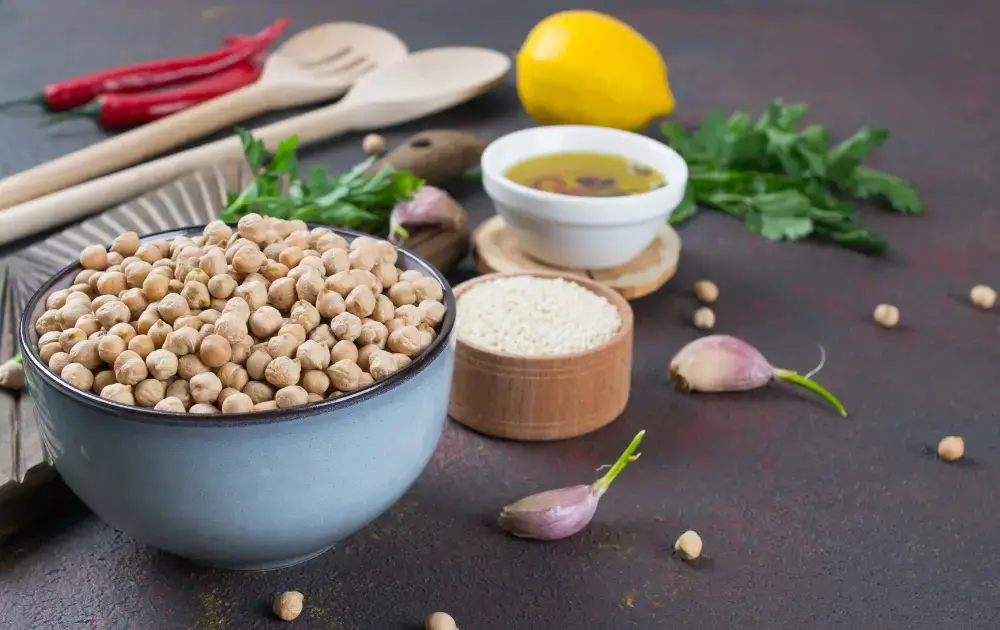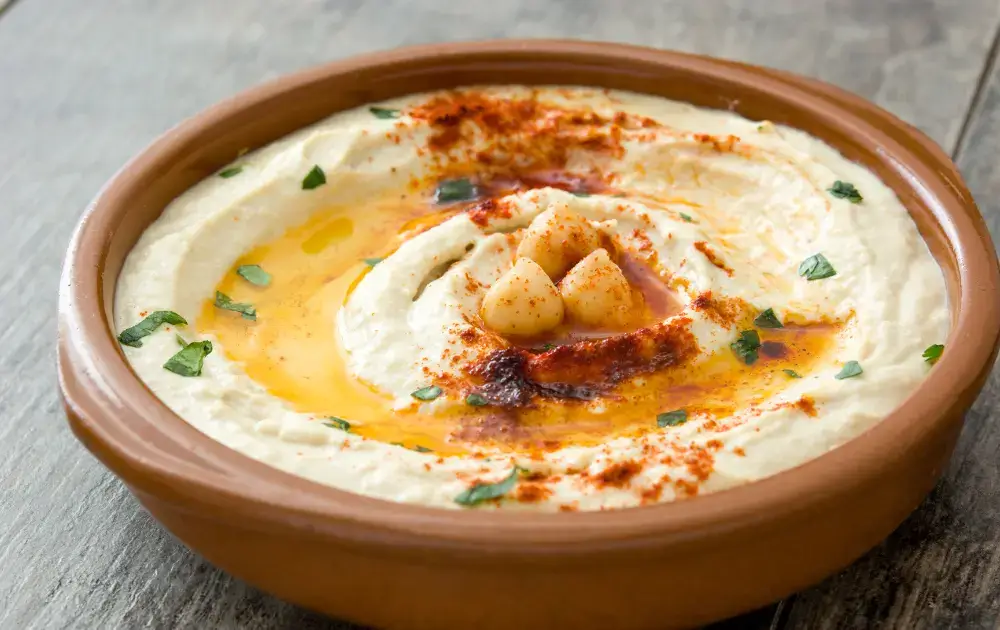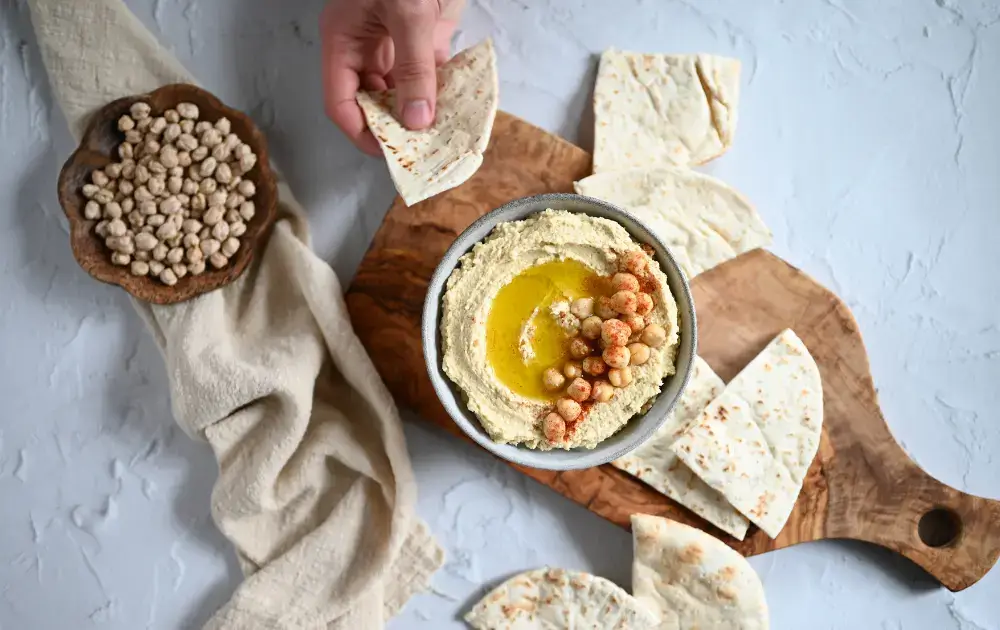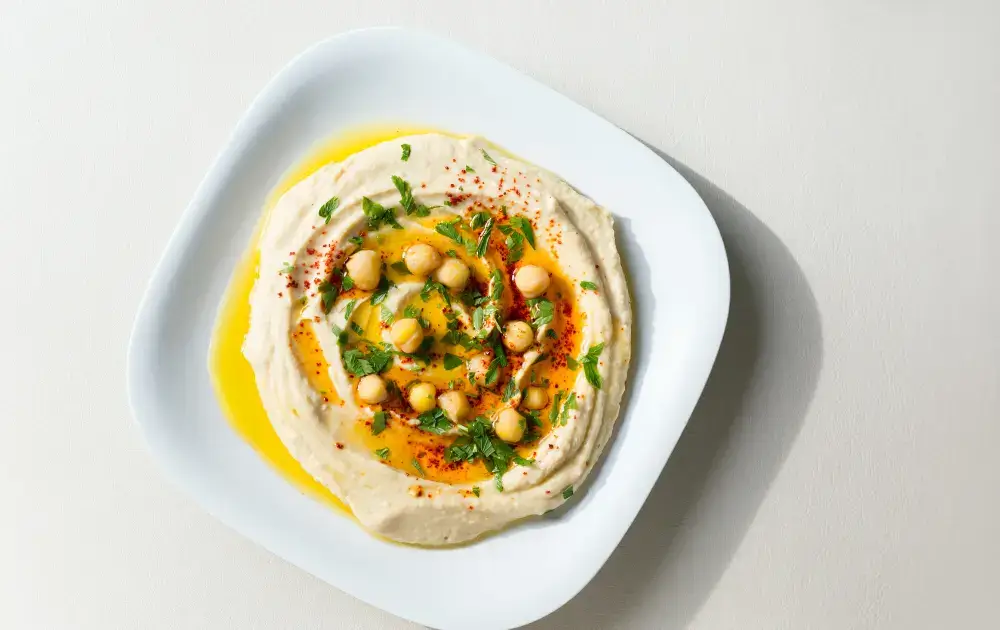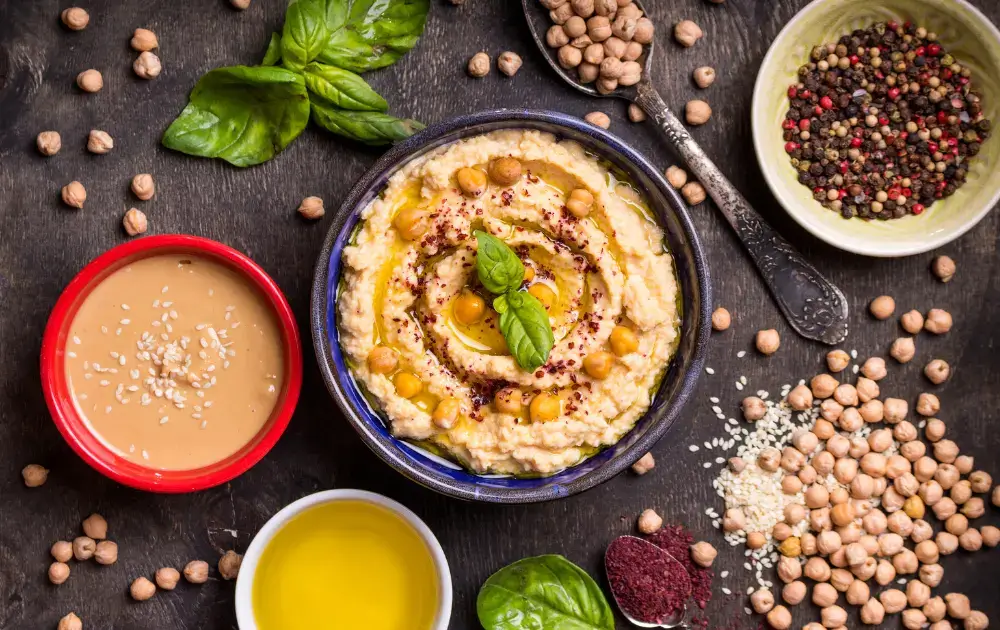Hummus Unveiled: A Culinary Odyssey from the Middle East to Global Delight
Part 1: Introduction
Hummus, a savory symphony of chickpeas, tahini, olive oil, lemon juice, and garlic, has transcended its Middle Eastern origins to become a culinary sensation with a global footprint. This creamy and versatile spread has captured the taste buds of millions, weaving its way into diverse culinary traditions and earning a cherished spot on tables worldwide. From its humble beginnings to its current status as a beloved delicacy, it is more than just a dish; it’s a cultural icon, a testament to the power of shared flavors that unite people across borders. In this exploration, we embark on a journey to unravel the origins, cultural significance, nutritional value, and diverse manifestations of hummus, inviting readers to savor the rich tapestry of this gastronomic marvel.
A. Defining Hummus and Unraveling Its Origin
It’s, a versatile and delectable spread, traces its roots to the Middle East. Defined as a creamy blend of chickpeas, tahini, olive oil, lemon juice, and garlic, it serves as a staple in various culinary traditions. Originating from the Arabic word meaning “chickpeas,” this savory dish has evolved into a global phenomenon, transcending cultural boundaries and capturing the taste buds of diverse populations.
B. A Culinary Marvel with Global Acclaim
Beyond its traditional roots, hummus has garnered widespread popularity and cultural significance on a global scale. Its journey from Middle Eastern kitchens to international tables has made it a beloved delicacy, appreciated for its rich flavors and nutritional benefits. Let’s delve into the evolution of hummus, exploring its cultural impact and how it has become more than just a dish — it’s a symbol of culinary unity and diversity.
Part 2: Nutritional Value
A. Unveiling Nutritional Powerhouses
Dive into the heart of hummus by examining its key ingredients, each contributing a unique nutritional punch. Chickpeas, packed with protein and fiber, lay the foundation for a nutrient-rich base. Tahini, derived from sesame seeds, adds a dose of healthy fats, while olive oil introduces antioxidants and heart-friendly monounsaturated fats. The marriage of these ingredients not only creates a palate-pleasing experience but also delivers a wholesome array of vitamins and minerals, making it a nutritional powerhouse.
B. Nourishment Beyond Flavor
Beyond its delicious taste, hummus boasts health implications that align with dietary wellness. The combination of protein and fiber in chickpeas aids in satiety, supporting weight management and promoting a feeling of fullness. Moreover, the monounsaturated fats from olive oil contribute to heart health, potentially lowering the risk of cardiovascular diseases. As a versatile and nutrient-dense option, it becomes a valuable addition to diets, offering a balance of essential nutrients. However, it’s crucial to consider individual dietary needs and potential allergens, ensuring that this delectable spread aligns seamlessly with diverse lifestyles. Transitioning from taste to nutrition, let’s delve into the health benefits and considerations that make this chickpea Dip not just a treat for the palate but a boon for overall well-being.
Part 3: Making Hummus at Home
A. Crafting the Foundation: The Basic Recipe
Embark on a culinary adventure with a straightforward yet exquisite basic recipe. Begin by blending chickpeas, tahini, olive oil, lemon juice, and garlic into a velvety concoction. This fundamental process not only captures the essence of traditional hummus but also serves as a canvas for a myriad of creative variations.
B. Infusing Flavors: Variations and Customizations
Transitioning from the classic, explore the endless possibilities of hummus customization. Elevate your taste experience with tantalizing variations:
- Roasted Red Pepper Hummus: Fire up your taste buds with the smoky sweetness of roasted red peppers. This variant adds a vibrant hue and a bold flavor twist, creating a dip that stands out on any occasion.
- Garlic and Herb Hummus: Immerse yourself in the aromatic allure of garlic and an herbaceous medley. This variation introduces a burst of freshness, turning humble hummus into a fragrant and savory delight.
- Spinach and Artichoke Hummus: Elevate the nutritional profile with the addition of nutrient-packed spinach and artichokes. This green-infused dip not only delights the palate but also offers a wholesome option for those seeking added vitamins and minerals.
Transitioning from the foundational recipe to these enticing variations allows you to tailor this Chickpea Dip to your preferences, creating a culinary masterpiece in the comfort of your kitchen. Let’s unravel the secrets of these unique hummus renditions, where innovation meets tradition in a harmonious blend of flavors.
Part 4: Hummus Around the World
A. Embracing Global Tastes: Regional Variations
Embark on a journey as we traverse the globe, exploring the regional nuances that have shaped distinct variations.
- Middle Eastern Hummus: Venture into the birthplace of hummus, where the classic rendition reigns supreme. Middle Eastern hummus embodies simplicity, with its emphasis on the pure flavors of chickpeas, tahini, and a hint of garlic. Served as a staple in the Middle East, this version reflects the authentic essence.
- Mediterranean Hummus: Transitioning to the Mediterranean, witness a fusion of flavors that adds a Mediterranean twist to the beloved dish. Here, hummus might incorporate additional ingredients such as cumin, paprika, or even a drizzle of extra-virgin olive oil, creating a sensory journey that mirrors the vibrant culture of the region.
- Americanized Hummus: Across the Atlantic, experience the evolution of hummus in American kitchens. Adapted to suit diverse palates, Americanized hummus often embraces creative liberties, introducing bold flavors like roasted garlic, sun-dried tomatoes, or spicy jalapeños. This version exemplifies the adaptability of hummus, seamlessly integrating into the tapestry of American culinary innovation.
Transitioning between these regional variations illuminates the diverse ways in which hummus has woven itself into the fabric of global cuisine. Each version tells a unique story, reflecting the local tastes, preferences, and cultural influences that have shaped this Chickpea Dip into a universally celebrated dish.
Part 5: Hummus in Popular Culture
A. A Culinary Star on Screen
Immerse yourself in the cinematic and television realms where hummus takes center stage. From heartwarming family dinners to high-energy party scenes, it graces the screen as more than just a dish; it becomes a symbol of shared moments. Directors and writers incorporate hummus into their narratives, showcasing its universal appeal and cultural significance.
B. Trending Beyond the Plate:
Transitioning from screens to screens, explore the digital landscape where hummus enjoys a vibrant presence in social media trends. Platforms like Instagram and TikTok witness a surge of hummus-related content, with food enthusiasts and influencers sharing their unique spins, recipes, and creative presentations. Hummus challenges, recipe swaps, and visually appealing hummus bowls become viral sensations, creating an online community that celebrates the versatility and visual appeal of this beloved spread.
Transitioning from the screen to social media platforms, hummus takes on new dimensions, captivating audiences and inspiring culinary creativity in the digital age.
Part 6: Health Benefits
A. Power Duo: Protein and Fiber Content
Delve into the nutritional landscape of hummus, where the dynamic duo of protein and fiber takes center stage. Chickpeas, the primary ingredient, contribute a robust protein punch, supporting muscle health and providing sustained energy. Simultaneously, the fiber content aids in digestion, promoting a sense of fullness and contributing to overall digestive well-being. Together, these elements make this dip not just a flavorful indulgence but a nourishing option for those seeking a balance of essential nutrients.
B. Nurturing Heart Health
Transitioning to cardiovascular well-being, explore how this Chickpea Dip becomes a heart-healthy choice. The inclusion of olive oil, a source of monounsaturated fats and antioxidants, plays a pivotal role in supporting heart health. These beneficial fats contribute to lower cholesterol levels, reducing the risk of heart diseases. By opting for hummus, individuals not only savor a delicious spread but also make a conscious choice towards nurturing their cardiovascular health, one bite at a time.
C. Aiding in Weight Management
Navigate the intersection of flavor and fitness as hummus emerges as a potential ally in weight management. The protein and fiber content in chickpeas work synergistically to promote a feeling of fullness, curbing unnecessary cravings and snacking. As a nutrient-dense option, this dip offers a satisfying and guilt-free addition to meals or snacks, making it a valuable component for those mindful of their weight.
Transitioning from nutritional components to health benefits, hummus emerges as more than a culinary delight; it becomes a conscious choice for those prioritizing both flavor and well-being. Let’s unravel the layers of health benefits that make this dip not just a treat for the taste buds but a nourishing ally for the body.
FAQs
A. Unveiling the Truth: Is Hummus Healthy for Weight Loss?
Addressing a common query, let’s explore the role of hummus in weight loss. With its protein and fiber-rich composition, can indeed be a valuable addition to a weight-conscious diet. The combination of these elements promotes a sense of fullness, reducing the likelihood of overeating. However, moderation is key, as the overall calorie intake remains a crucial factor in any weight loss journey. Discover how integrating this dip smartly into your meals can contribute not only to a wholesome diet but also to your weight management goals.
B. Protein Power Play: Can Hummus Replace Meat as a Protein Source?
Transitioning to the realm of protein, explore whether this dip stands as a viable substitute for meat. With chickpeas serving as a primary protein source, hummus offers a plant-based alternative that can complement a vegetarian or vegan diet. While it might not entirely replace the variety of nutrients found in meat, incorporating Chickpea Dip provides a valuable boost of protein, making it a nutritious option for those seeking diverse protein sources.
C. Beyond the Dip: What Are Some Creative Ways to Use Hummus?
Unleash your culinary creativity as we explore innovative ways to incorporate hummus beyond the traditional dip. From sandwich spreads to pasta sauces, it proves its versatility in the kitchen. Discover how this flavorful spread can elevate your recipes, infusing them with a unique taste profile while adding a nutritional punch. Let’s delve into creative applications that showcase hummus as more than just a dip but a versatile ingredient that enhances a myriad of dishes.
D. Inclusive Delight: Are There Any Gluten-Free Hummus Options?
Transitioning to dietary considerations, explore the gluten-free aspect of hummus. Typically, it is naturally gluten-free, making it a safe option for individuals with gluten sensitivity or those following a gluten-free diet. However, it’s crucial to check labels, especially for commercially produced hummus that might incorporate additional ingredients. Discover how hummus stands as an inclusive delight, catering to various dietary preferences and restrictions.
Navigating through these frequently asked questions provides a comprehensive understanding of hummus, addressing concerns related to health, dietary preferences, and culinary versatility. Let’s unravel the answers to these common queries, shedding light on the multifaceted nature of this beloved spread.
Part 7: In the Market
A. Market Pioneers: Leading Brands and Their Offerings
Embark on a journey through the aisles as we explore the diverse landscape of hummus brands and their unique offerings. Established brands such as Sabra and Cedar’s have become household names, known for their traditional and innovative varieties. Transitioning from classic flavors to exotic blends, these market pioneers continue to captivate consumers with their commitment to quality, flavor, and convenience. Explore the shelves and uncover the stories behind these leading brands, each contributing to the ever-expanding world of hummus.
B. Shaping Palates:
Transitioning to the evolving consumer landscape, witness the dynamic trends shaping Chickpea Dip consumption. As the demand for healthier snack options rises, it has emerged as a go-to choice, appealing to health-conscious individuals seeking both flavor and nutrition. Additionally, the rise of plant-based diets has propelled hummus into the spotlight as a versatile and protein-rich alternative. From traditional recipes to bold and unconventional flavors, the market reflects a continual shift in consumer preferences. Explore how hummus has become more than just a dip; it’s a reflection of changing culinary preferences and a marker of evolving food cultures.
Navigating through the market dynamics and consumer trends provides a comprehensive perspective on the position of the Chickpea Dip in the contemporary food landscape. Join us in exploring the array of choices available and the factors influencing the ever-growing popularity of hummus in the market.
Part 8: Conclusion
A. Global Harmony on the Plate:
Summing up our exploration, let’s revisit the global phenomenon that is hummus. From its humble origins in the Middle East to its widespread popularity on international tables, hummus has become a culinary ambassador, uniting diverse cultures through its flavors. Whether enjoyed in the bustling markets of the Middle East, the Mediterranean coast, or American kitchens, hummus transcends borders, embodying a shared love for its rich taste and nutritional benefits. Its journey from a regional dish to a global sensation mirrors the interconnectedness of our culinary experiences, proving that, indeed, good food knows no boundaries.
B. A Gastronomic Invitation:
As we conclude, let the aromatic allure and wholesome goodness of hummus beckon you to embark on your culinary journey. Whether you’re a seasoned hummus enthusiast or a newcomer to its delights, there’s always room at the table for this versatile spread. Explore the traditional recipes, experiment with creative variations, and savor the cultural richness encapsulated in every bite. The world of hummus is an invitation to indulge your taste buds, appreciate diversity, and celebrate the shared joy that good food brings. Here’s to a future filled with delightful hummus discoveries and gastronomic adventures!
Print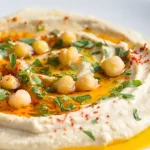
Hummus
- Total Time: 15 minutes
- Yield: About 2 cups
- Diet: Gluten Free
Description
A creamy and flavorful chickpea-based spread, rich in Middle Eastern tradition and loved worldwide.
Ingredients
- 🌱 1 can (15 oz) chickpeas, drained and rinsed
- 🌱 1/3 cup tahini
- 🌱 1/4 cup extra-virgin olive oil
- 🌱 3 tablespoons fresh lemon juice
- 🌱 2 cloves garlic, minced
- 🌱 1/2 teaspoon ground cumin
- 🌱 Salt to taste
- 🌱 Water (as needed for desired consistency)
Instructions
- Blend Chickpeas: In a food processor, combine chickpeas, tahini, olive oil, lemon juice, garlic, cumin, and a pinch of salt.
- Blend Until Smooth: Blend until smooth, scraping down the sides as needed.
- Adjust Consistency: If the mixture is too thick, add water gradually until the desired consistency is achieved.
- Season to Taste: Taste and adjust seasonings as necessary.
- Serve: Transfer to a bowl, drizzle with olive oil, and garnish as desired.
Notes
Experiment with additional flavors like roasted red pepper or herbs for delightful variations.
- Prep Time: 10 minutes
- Category: Appetizer
- Method: Blending
- Cuisine: Middle Eastern
Nutrition
- Serving Size: Per 2-tablespoon serving
- Calories: 70
- Sugar: 0g
- Sodium: 65mg
- Fat: 5g
- Saturated Fat: 1g
- Carbohydrates: 6g
- Fiber: 2g
- Protein: 2g
- Cholesterol: 0mg

